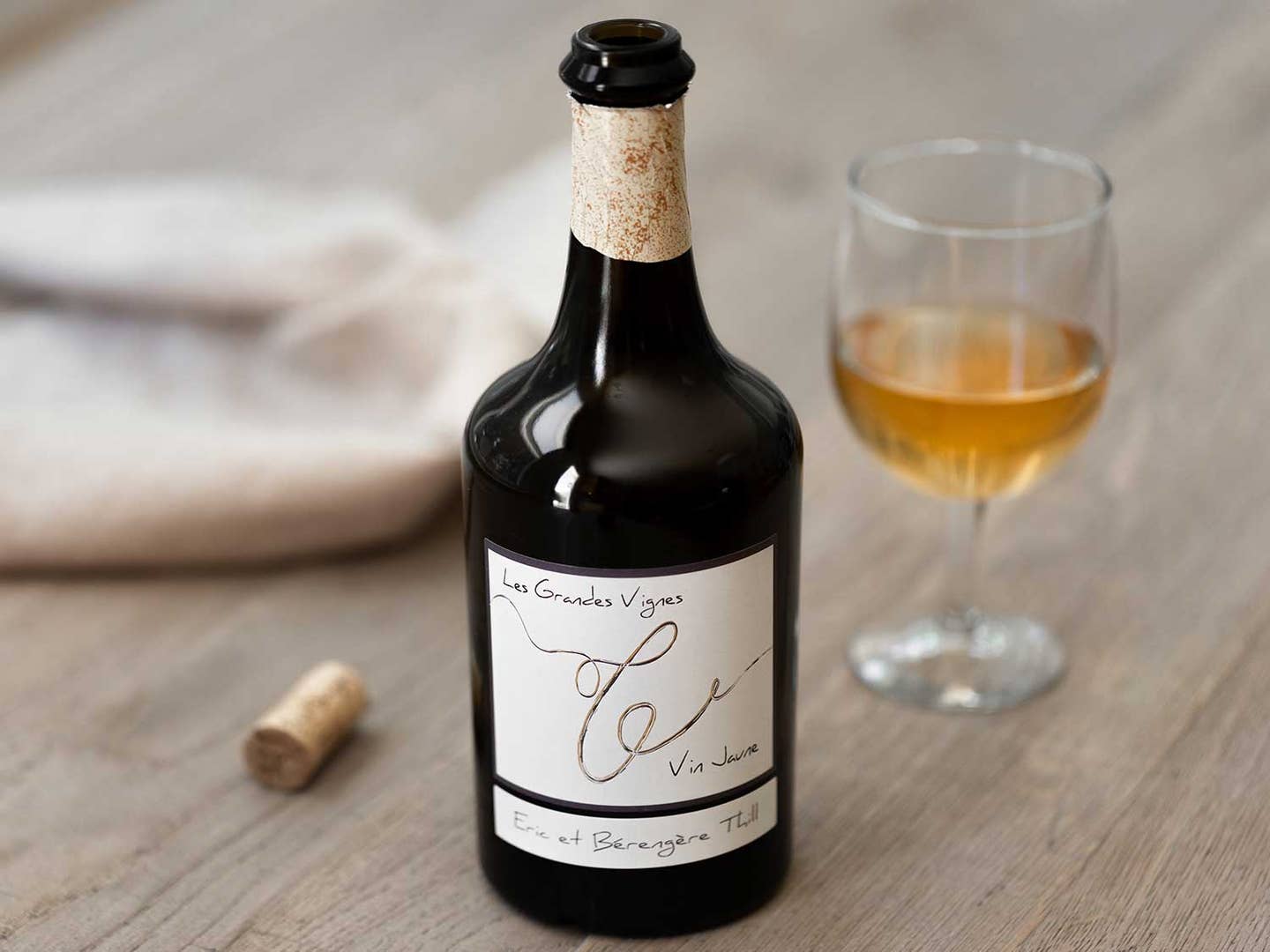
The Ultimate Chicken and Wine Braise
Unapologetically rich and rustic, the eastern French classic, poulet au vin jaune will give you a reason to celebrate.
Some of the world’s greatest dishes demand a nip of wine or spirits to reach their full potential. Welcome to Splash in the Pan, where writer and drinks expert Tammie Teclemariam teaches you how to make them.
Poulet au vin jaune is a paragon of French food: regional, rich, and rustic. By all instructions, this chicken and mushroom stew might seem like a standard fricassee, but the soul of the dish relies on using the best of everything: pedigreed poultry, wild mushrooms, and thick cultured cream.
Hailing from the Swiss-bordering Franche-Comté, home of the Jura wine region, the star of this dish is vin jaune, a bone-dry golden elixir redolent of walnuts, bread, thyme, and spices with a stunning amount of acidity that makes it one of France’s most exceptional wines. Even after an hour of simmering in this stew, it still has a presence. Unlike simpler wines, vin jaune is deeply savory, blending seamlessly with the earthy flavors of mushroom and browned chicken.
Vin jaune also has a bit of a reputation, lying at the crossroads of old-school tradition beloved by textbook wine connoisseurs and the extreme flavors and low-intervention winemaking celebrated by natural wine hipsters. When David Chang hangs out with René Redzepi in Denmark, they’re drinking vin jaune.
Oxidative and aged “sous-voile,” or underneath a layer of naturally forming yeast, like many of the white wines the Jura is famous for, vin jaune must be aged for six years and three months in barrels that are never topped up. In that time, almost half of the wine’s volume will evaporate, which is why vin jaune is sold in squat 620ml bottles called clavelins, and why it is so costly, with bottles starting around $80.
Most recipes calling for wine don’t indicate something special—usually the opposite. Once cooked, the delicate aromas and tastes we enjoy from a glass disappear, concentrating the remaining sugars and tannins, so you don’t want to start with a wine that is too far in either direction, quality wise. Resist the impulse to cook with bottom-shelf wine as the cooking process will highlight any industrial additives. Light- and medium-bodied, dry table wines are a universal choice for most deglazing and braising needs.
Using something decent enough to drink is a good rule for standard dishes, but for a dose of defining flavor, many cooks reach for an oxidative wine. If you’ve added Shaoxing rice wine to a stir-fry, finished cream of crab with a splash of sherry, or sauteed chicken and mushrooms with Marsala, you know what I mean. The savory and nutty flavors imbued from these wines are distinctive and hard to replace, and no dish proves that more than poulet au vin jaune.
The supporting cast in this dish also shows the best that the agricultural paradise of Eastern France has to offer, like crème fraîche and morel mushrooms. When morels are in season, you should use as many in this dish as you can forage or afford. During the rest of the year, rehydrated dried ones are almost as nice.
Considering all the fanfare around morels, vin jaune, and cultured cream, you’d be remiss not to make this dish with a great chicken. The region is partially home to the AOP Poulet de Bresse, the only protected poultry designation within the European Union. If, like me, you can’t get your hands on an original specimen, a really great local free-range bird is a fair replacement. While butchering the bird, I also like to french the drumsticks, a step done at fancy restaurants to make the meat as tender as possible.
This is a deluxe chicken stew with a lot of delicious sauce, so you’ll want to put some time into contemplating a fine accompaniment like spätzle or a fragrant rice pilaf, though I’ve also seen it served in France with a side of fries. I take mine with fresh pappardelle and a glass of the remaining vin jaune alongside to complete the experience.
Keep Reading
Continue to Next Story










